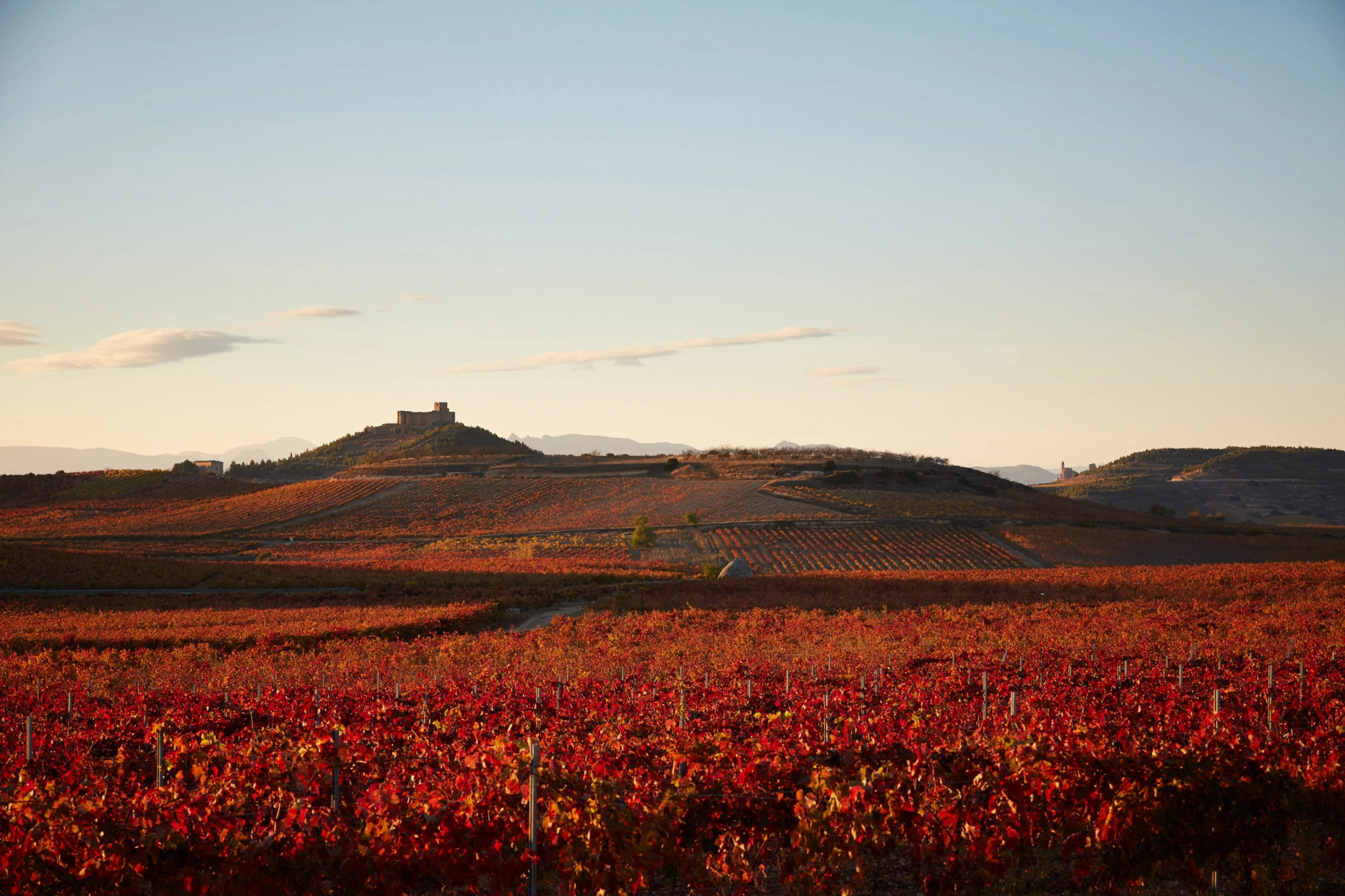As you well know, as we’ve repeated it on more than one occasion, a good wine starts in the vineyard… But of course, it is finished in the winery.
We have already told you about everything that happens in the vineyards prior to harvest. We have also told you what the harvest is, why it is so important and how and when it is carried out.

Now, to complete the cycle that goes from the vine to the glass, we need to talk about what happens in the winery when the harvest is complete. Although in Bodegas Montecillo we work all year round, with patience and with passion, rigorously controlling each phase of the process, the weeks just after harvest are the busiest. Do you want to know what we get up to?
Let’s get started!
The grapes arrive
Once they have been harvested, the bunches of grapes arrive at our winery on small trailers: they don’t need to travel very far as we work, as we have done for decades, with vine growers from our local area, the Rioja Alta.
As we’ve told you before, at all times, from long before the harvest, we are exhaustive in monitoring the condition of the vines and the fruit. The last checks on the final quality are carried out when the grapes arrive in our facilities: anything that doesn’t meet our stringent criteria must be discarded.
Next, the destemmers mechanically remove the grape berries from the stalks or stems and, afterwards, the grapes are gently crushed to extract the must.
This part, the crushing, is what was carried out in the past with bare feet, treading the grapes in the vats: it was the best way of easily releasing the must from the pulp without pressing the skins or grinding the seeds. Today, this process has also been mechanized, although the tradition has not been lost: we still practice grape treading every year in our harvest festival celebrations.
From this moment, there are some minor differences depending on whether we are producing a red, white or rosé wine. The red wine goes to the fermentation tanks (usually made from stainless steel, wood or cement), it is allowed to macerate in contact with the skins, and is subject to continuous «pumping-over» to mix the skins with the liquid. This process gives the must colour, aromas and tannins. In the case of rosé wine, the grapes skins are left to macerate for a shorter time, then the liquid is «bled off» from the tank and it is allowed to ferment very slowly and without pumping-over (there are no skins). In the case of the must for white wine, the skins are also separated when it is time to ferment the wine.
Fermentation: the magic that converts must into wine
As you already know, must is converted into wine through a natural process, fermentation, during which the sugars in the must are converted into alcohol through the action of yeasts.
And, as we have already indicated, this fermentation process varies slightly between red, white and rosé wines. For example, as we already told you when we talked about how we make our red wines, in their case, fermentation takes place over two phases. The first fermentation – maceration stage (in which the must is converted into wine) and the following malolactic fermentation (that softens it through the transformation of malic acid into lactic acid). Both processes take place over approximately a month.
After fermentation and with the aim of removing solid substances, the processes of racking, clarification and filtration of the wine are carried out. And on we go.
Ageing:
And then, the final phase starts, the one that converts our wines into historic icons.
The wines are now clean and ready for ageing and show their true qualities when fermentation is over. Depending on their potential, they will be converted into Crianza, Reserva or Gran Reserva. For this, barrels of the very finest quality oak with different origins and levels of toast according to the type of wine will be filled, and the wine will remain there for different maturation periods. This is a very meticulous process and each of the barrels is monitored (cleanliness, fill level, conditions in the barrel hall) to ensure a harmonious union between wood and wine.
From the barrel, the wine moves on to the bottle, where it will also rest for some time, becoming great, as we like to say. As a point of interest, we store wines in our cellars from every vintage back as far as 1926. The very same year that the D.O.Ca Rioja was created!
And this is where we no longer intervene… allowing wise Father Time to do his work.
Once the stipulated requirements have been reached, the elegantly dressed bottles leave our winery and embark on their journey to the end consumer: some will travel a long way, as we export to more than 40 countries.
As you can see, with all this work, in Bodegas Montecillo, we have more than enough to entertain us throughout the whole year. And now is a good time to remind you that you are always welcome to come and visit us!
